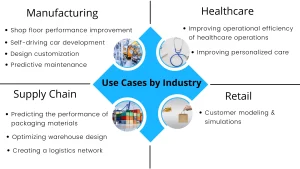The Internet of Things is a huge and exciting concept, but with all of the new devices being created, there are some risks and privacy issues that need to be considered. This article discusses some of those risks and challenges. It also looks at some of the innovations being used to keep your personal information safe.
Security risks
If your organization is using IoT devices, it’s important to understand security risks associated with this technology. The proliferation of connected devices has increased the threat of cyberattacks, and organizations are now seeking ways to protect their networks and systems.
Cybercriminals can exploit vulnerabilities and phishing scams to gain access to your network. They may also use compromised IoT devices to launch DDoS attacks. In order to prevent this from happening, IT teams must use threat detection software to identify threats and proactively protect their network and systems.
In addition to threats, IoT devices are susceptible to physical attacks, which can disrupt communications or spread malware. For instance, attackers can hack into an IoT device to steal data and credentials.
One of the most common methods of compromise is through reused passwords. Hackers often target known vulnerabilities, which are simple to crack.
Another type of attack is a man-in-the-middle (MITM) attack. In this type of attack, a malicious code module detects a machine that is susceptible to an attack and signals the device to launch an attack.
Privacy issues
The Internet of Things (IoT) and privacy issues are becoming more and more of a concern. IoT devices may have the capacity to collect data from other devices and send it across jurisdictional boundaries without your knowledge or consent.
One example of an IoT device that can do this is a Wi-Fi-enabled light bulb. Researchers found a vulnerability in this device that could let hackers access 10GB of data.
There are many ways that devices can be exploited for their data. IoT is a growing field and its future will bring new types of personal information collection.
IoT and privacy issues are an inevitable consequence of the exponential growth of the industry. Nevertheless, the potential for the IoT to be beneficial to society is real. However, it is important to make sure that the benefits outweigh the risks.
One way to minimise the risk of a data breach is to physically secure your devices. Manufacturers should make sure that they have robust authentication features in place. This includes two-factor authentication and multi-factor authentication.
Blockchain technology
Blockchain technology for IoT and privacy/security can enhance the safety of your IoT ecosystem. The benefits of implementing this technology are clear. First, it eliminates the need for centralized servers. Second, it ensures a secure and transparent communication process. Third, it protects the integrity of your data.
It also offers a range of other capabilities. For example, it can authenticate a device. In addition, it can help fight the introduction of malicious IoT devices into a network.
One company has already implemented a blockchain-protected security platform for IIoT. The system is designed to address the challenges of 5G-enabled IoT.
Aside from being able to protect data, it also has the potential to lower operational costs. Additionally, it can improve the efficiency of supply chain networks.
Using a blockchain to record and validate predetermined acceptable behavior can be a big win for your business. Not only can it help prevent network disruption, it can also reduce the need for a manual process.
Cyberattacks on IoT devices
The Internet of Things (IoT) is a growing area of research and innovation that allows devices to connect to the internet. These devices can help to improve a variety of processes across all industries. However, these devices also present an increasing cyber security risk.
With the rapid development of the IoT, there is an increasing need for cybersecurity solutions. A major concern is privacy. This can include personal information, such as names, social security numbers, and national health ID numbers.
To protect the IoT, organizations need to establish a cybersecurity plan to identify potential threats and implement policies to reduce the attack surface. In addition, they should implement training and technical expertise to maintain a secure IoT.
Privacy is a key concern, as attackers can access sensitive data passing through IoT devices. They can use weak connections to break into a device, or access data in the inner circuits. Often, hackers will target the most vulnerable devices, such as CCTVs and digital video recorders.






More Stories
Integrating Digital Twin Technology for Small-Scale Manufacturing and Logistics
The Developer’s Guide to Post-Quantum Cryptography Implementation
Smart Home Automation for Renters: Your Guide to a Smarter, Temporary Space